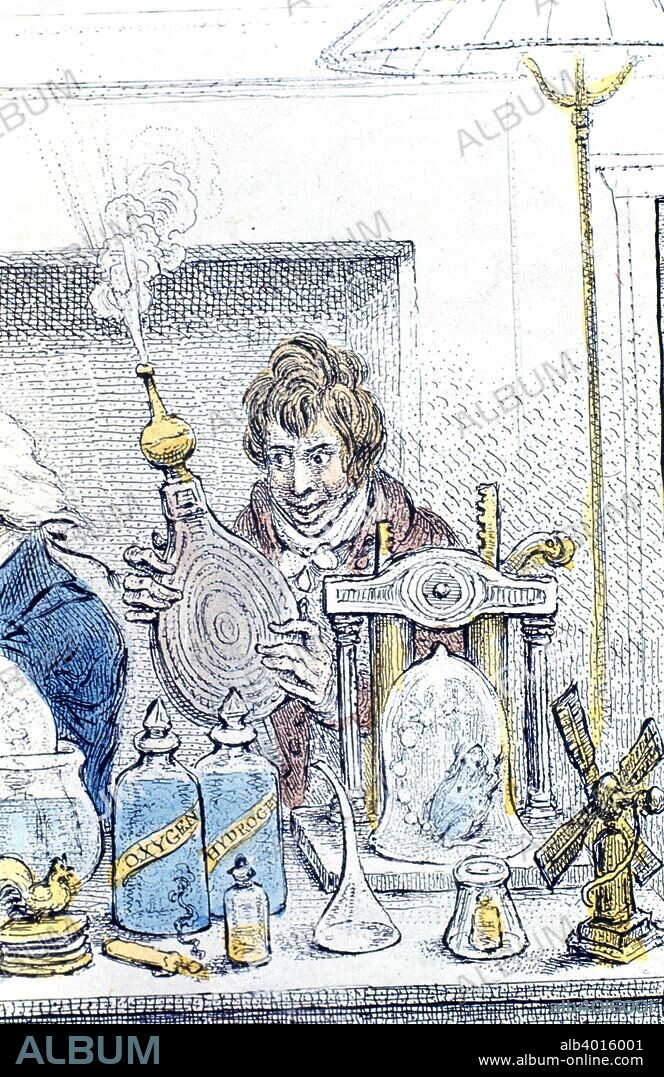alb4016001
Humphry Davy, British chemist and inventor, 1802. Artist: James Gillray

|
Ajouter à une autre Lightbox |
|
Ajouter à une autre Lightbox |



Avez-vous déjà un compte? S'identifier
Vous n'avez pas de compte ? S'inscrire
Acheter cette image.
Sélectionnez l'usage:

Titre:
Humphry Davy, British chemist and inventor, 1802. Artist: James Gillray
Légende:
Voir la traduction automatique
Humphry Davy, British chemist and inventor, 1802. Davy (1778-1829) discovered the anaesthetic effects of laughing gas (nitrous oxide). In 1801 he was appointed lecturer at the Royal Institution, where he investigated, with his assistant Michael Faraday (1791-1867), his theory of volcanic action. Using electrolysis, Davy isolated the metals barium, calcium, magnesium, potassium, sodium and strontium, as well as proving that chlorine was a chemical element. He is probably best known for his invention in 1815 of the miners' safety lamp, which enabled deeper, more gaseous seams to be mined without risk of explosion. Detail from a Gillray cartoon, New Discoveries in Pneumatics, showing Davy demonstrating the effects of laughing gas to a meeting of the Royal Institution, London.
Personnalités:
Crédit:
Album / Oxford Science Archive / Heritage Images
Autorisations:
Modèle: Non - Propriété: Non
Questions sur les droits?
Questions sur les droits?
Taille de l'image:
3366 x 5191 px | 50.0 MB
Taille d'impression:
28.5 x 44.0 cm | 11.2 x 17.3 in (300 dpi)
Mots clés:
ANESTHESIE GENERALE • ANESTHESIE • ANGLETERRE • BONHOMME • CHIMIE • CHIMISTE • COULEUR • ELECTROLYSE • GILLRAY • HOMME DE SCIENCE • HOMME • INDUSTRIE • INVENTEUR • JAMES GILLRAY • OCCUPATION • PNEUMATIQUE • PRESSION • PROFESSION • SAVANT • SCIENCE: CHIMIE • SCIENTIFIQUE
 Pinterest
Pinterest Twitter
Twitter Facebook
Facebook Copier le lien
Copier le lien Email
Email
